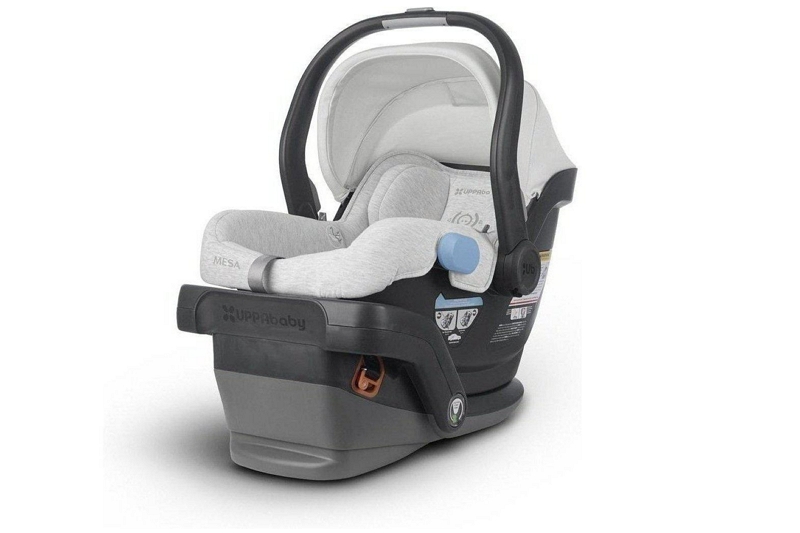How to put on a baby car seat cover? A baby car seat cover helps to protect your child from the elements while in their infant carrier. It is also a great way to dress up your little one’s ride because you can get them custom-made covers that bring out their personality.

Here are some tips on how to put on a baby car seat cover
• When putting on your baby’s car seat cover, always check for any safety issues first before placing the fabric over it. If there anything wrong with the straps or buckles, this could cause an accident if not properly secured so make sure everything is safe and sound
• The next thing you have to do after making sure everything is okay with your infant carrier is place it inside of base which usually snaps together easily.
• Then you can gently place the baby’s seat cover on top of the base and slowly tighten it to fit your car seat perfectly.
Should my 7-year-old be in a car seat?
Many parents wonder whether their child should be in a car seat. This is not an easy question to answer, but the law dictates that all children under age seven must use some type of restraint system while riding in cars. The only choice you have is deciding which one will best suit your particular situation and needs at any given time.
There are three main types of restraints for kids: rear-facing seats (which go up until about 20 pounds), forward-facing seats with harnesses (up to 40 pounds) or booster seats without shoulder straps (at least two years old).
Rear-facing seats provide more protection by distributing energy over the whole body, where forward-facing ones distribute it through the neck or lap area if there’s a collision.
But for many parents, the biggest question is whether to go with a harness or belt-positioning booster seat. Harnesses are better because they distribute forces across the child’s whole body rather than just their neck or legs.
However, car seats manufactured before 2002 may not have been made of energy-absorbing materials and may break apart during crashes which can put your child at risk for injury by ejection from the vehicle.
Booster seats without shoulder straps do provide more protection but only if children use them properly, so you must keep this in mind when using one.
If you don’t want to think about all these different types of restraints and how much weight each type supports, we suggest going with a seat belt – it’s the safest choice for adults and kids alike.
Car seat safety is a very important topic because car accidents are one of the leading causes of death in children under 18. There has been an increase in deaths from this cause over time, especially among children less than five years old, which tells us that we need to be taking action now to protect our families from these tragic injuries and fatalities .
In 2015 alone there were more than 26 million motor vehicle crashes, resulting in 35 thousand fatalities across America, so you can see why maintaining proper child restraint laws needs to be a priority for all states.
If your state does not have child restraint laws make sure you get involved with local committees! Booster seats without shoulder straps do provide more shoulder protection than a seatbelt alone, but the AAP recommends that ALL children under age eight should ride in a booster with a lap and shoulder belt.
How much does a toddler have to weigh to be in a booster seat?
Toddler booster seats are usually used for children who weigh at least 40 pounds. If your child weighs less than that, they can either be seated in a harnessed car seat or a high back belt-positioning booster seat.
The weight limit on the JunoTek® Belt-Positioning Booster Seat is 100 lbs., so if you have an older toddler weighing 90lbs+ this should work just fine!
If your child is under 80 lbs., then it would probably be best to use a traditional three-point harness system instead of any type of belt-positioning device.
This includes using rear-facing convertible car seats and forward-facing combination safety systems for toddlers until age five because both meet all current NHTSA standards as well as FHWA guidelines for keeping your child safe in the car.
When can my child move to a booster seat?
A great time is when the shoulder belt fits your child across his chest and not on their neck. This typically happens somewhere between four feet nine inches tall (four years old) and five feet three inches tall (six years old).
Please note that if you have an older or taller preschooler, they may still use this as well for another year because they need it more than adults do!
Many parents ask “But what about the regular car seat harness?” The slack in those belts is different from a booster, so we want our kids only using boosters until we know their shoulders are above those of a standard adult belt — which means no longer needing to be protected by a booster.
I know that some kids are still a little bit small for the belt, but they’re getting bigger and might be able to use it next year.
